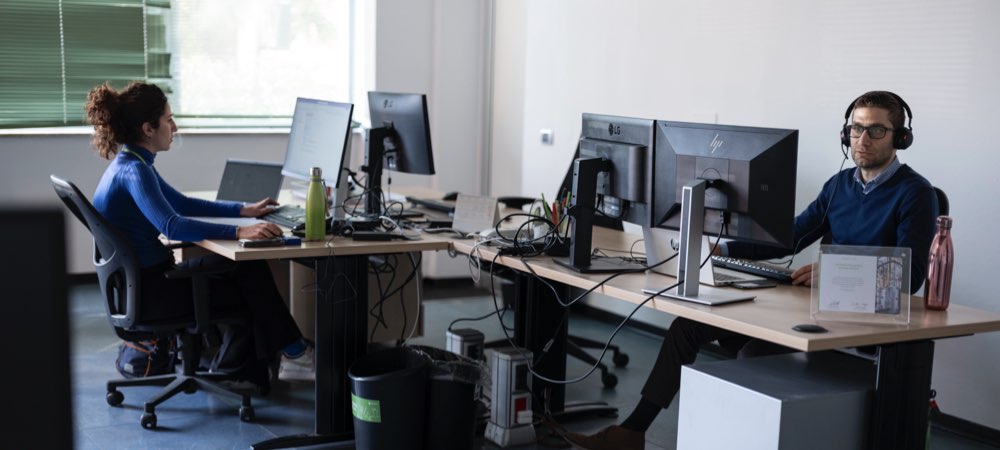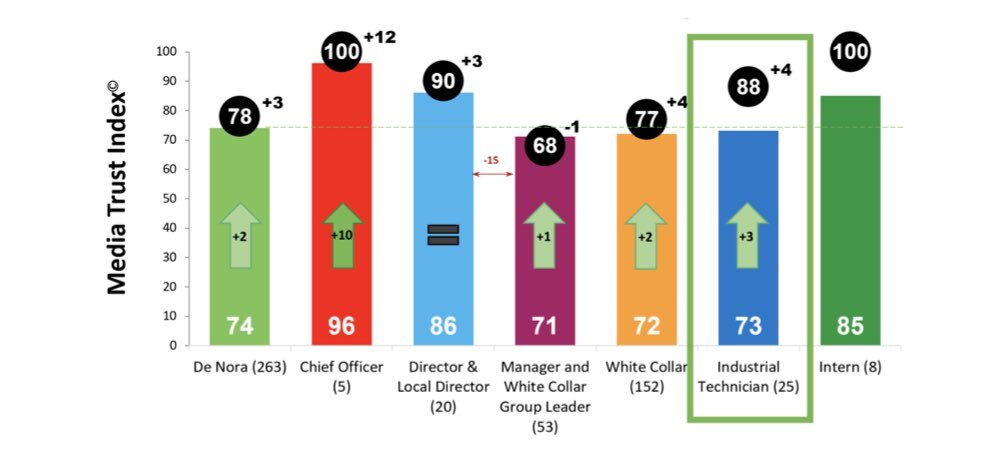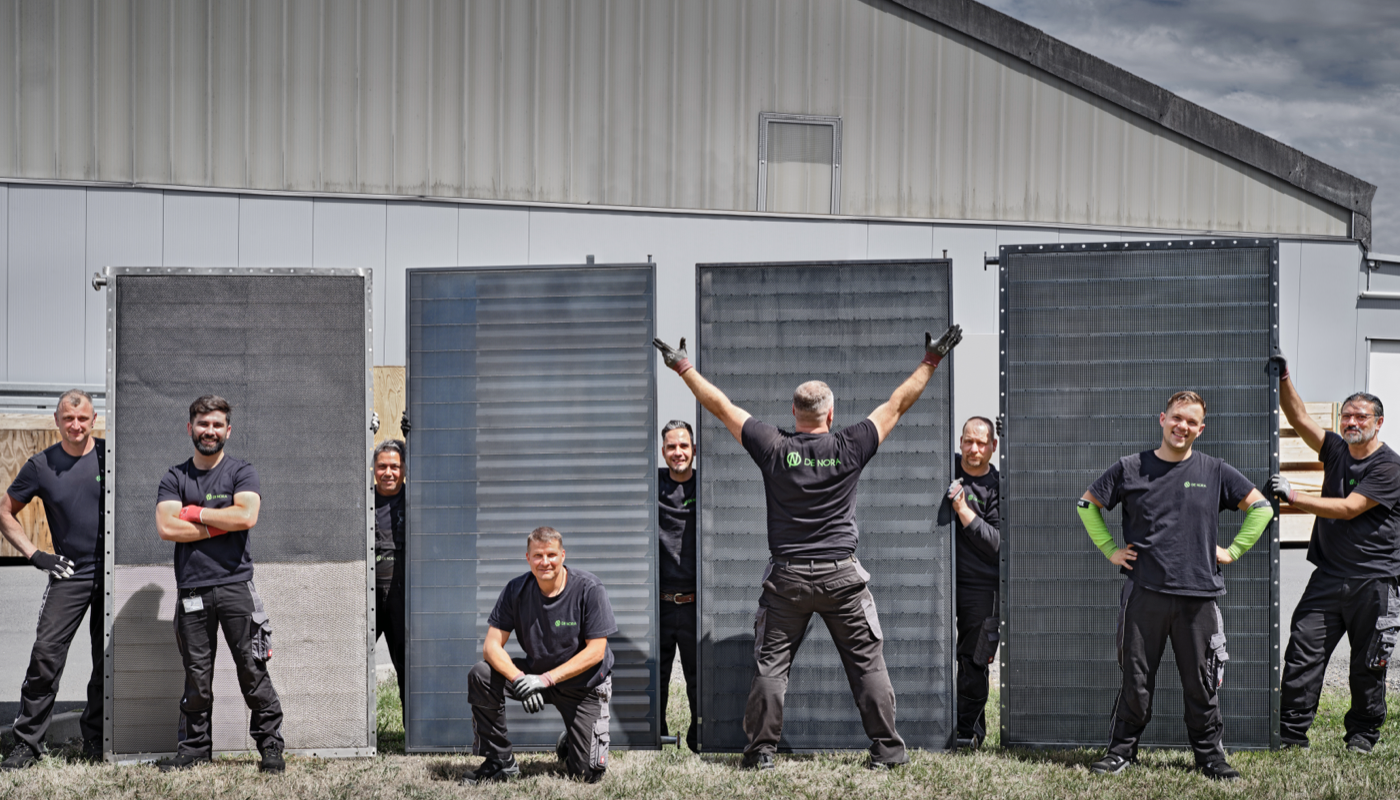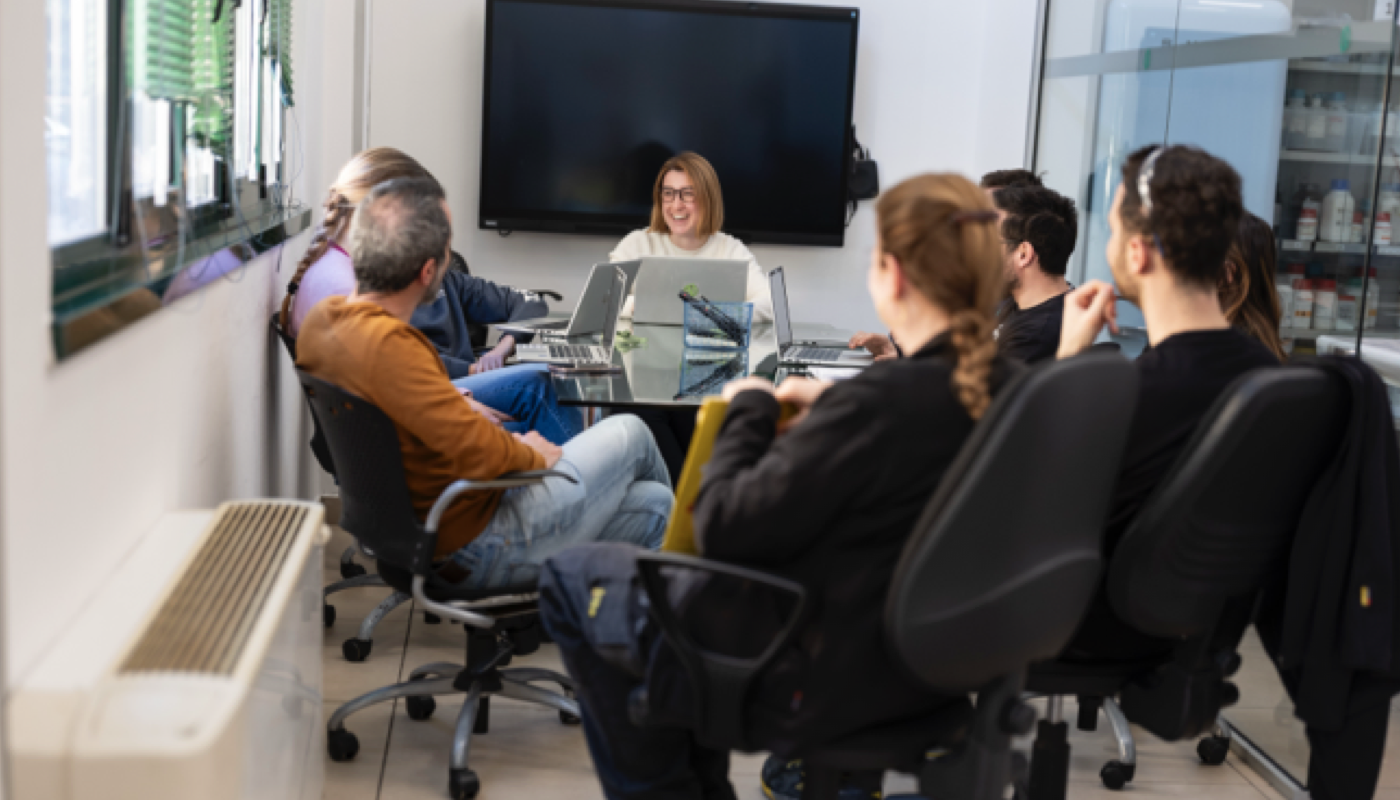Enabling people to reach a high level of wellbeing is one of the goals that has always been a core part of De Nora’s mission for workplace happiness.
Its strong commitment has allowed the company to achieve, over the years, wellbeing through a better balance between personal and work life. De Nora’s effort led to more than simple balance, it helped create a synergy between work and personal life.
That’s why, within the company, we talk more about work-life blend and not work-life balance.
At De Nora, people can benefit from flexible remote working policies that allow them to manage their time freely and responsibly, following a model based on trust and self-management.
Moreover, everyone has flexible working hours which, together with available leave options, helps them to find a better balance between work and personal life.
Let’s see the different categories in detail.
 WORKING AT DE NORA
WORKING AT DE NORA
Would you like to work for a company where people’s wellbeing is a priority? Click on the button and apply now
1. Flexibility for white-collar workers
For people with a desk-based role, De Nora has implemented a model of working hours based on a flexible monthly schedule rather than the traditional 40 hours per week, offering a greater flexibility of start and end times.
This allows everyone to:
-
Manage their work day according to individual needs, without requesting days off but simply informing the manager;
-
Make up for the missing hours on any other day of the reference month, ensuring that company needs are met and the regulatory limits are respected.
The freedom and autonomy afforded by De Nora's time-management approach, allow everyone to schedule their activities according to their personal needs, fostering harmony between life inside and outside the office.
Great progress has also been made regarding clocking in and out. According to the traditional systems, people are typically required to clock in and out four times a day (at the start and end of the day, and for their lunch break). At De Nora, everything is more flexible: for all the white-collar workers, the lunch break clocking requirement has been removed. Moreover, for some of them, daily clockings have been reduced to one daily clock-in upon arrival, and this conveys a strong message of trust.
Introducing this new model of flexible hours led to a significant reduction of overtime work, since many prefer balancing their time instead of collecting extra hours, even though they are paid.
The results of the Great Place to Work certification also confirm this, identifying flexibility as one of the main indicators of satisfaction and happiness among De Nora's people.

2. Flexibility for blue-collar workers
Flexible working hours are a useful resource especially for roles such as industrial technicians who carry out most of their work on site and cannot work remotely.
De Nora, committed for years to achieving collective wellbeing, uses the concept of flexible working hours to offer a good work-life blend also for this category of workers, but in a slightly different way compared with the white-collar workers.

To find alternative solutions for industrial technicians, the company piloted the introduction in February 2024 of the 10-minutes flexibility at the beginning of the shift. The initiative had great success among blue-collar workers. Consequently, in February 2025, one year later flexibility was increased to 15 minutes.
Such change had a significant impact on people’s wellbeing: before that, even a few minutes delay required the use of hours off.
Thanks to this model, blue-collar workers can also benefit from a flexible management of working hours and schedule their days more freely.
As shift workers cannot benefit from this flexible scheduling model due to the nature of their tasks, they are entitled to extra hours of leave, allowing them to compensate for rigid hours.
These have proven to be winning solutions for De Nora’s industrial technicians, as shown in the Great Place to Work research which indicates that they seem to be more satisfied than managers and colleagues, quite a surprising fact for the manufacturing sector.

De Nora’s people wellbeing indicator, dived by categories (Good Place to Work 2024)
Despite having already reached high levels of collective satisfaction for what concerns work-life balance, De Nora is working to find new solutions to further improve the worker experience, through projects aimed at reducing the number of clockings and making leave management easier.
3. Special leave: prioritizing people’s value
Along with working hours flexibility, De Nora has introduced extra leave, in addition to the ones provided by the CLA (Collective Labor Agreement), with a special focus on supporting people through different phases of their personal lives
Both new parents, for example, can work fully remote for up to five months, during which they receive a daily reimbursement for energy and internet bills.
Moreover, all the moms who apply for it (if compatible with their role), are entitled to convert their full-time contract to a temporary part-time arrangement, with a six-hour daily schedule until the third birthday of their child.
De Nora’s relationship with its people is based on strong mutual trust and the implementation of flexibility initiatives for a work-life blend is the tangible evidence.
Happier and more independent people, at every level, lead to higher productivity and to a more positive work environment.
This is one of the reasons why the company ranks among the best workplaces in Italy in terms of work-life blend.




